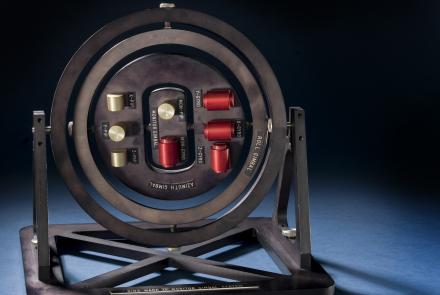A professor and aeronautical engineer at the Massachusetts Institute of Technology (MIT), Charles Stark Draper played a major role in advancing the art of inertial navigation.
Largely through his efforts, inertial navigation became essential for aircraft, missiles, submarines, and the Apollo spacecraft. The Navy’s fleet ballistic missiles and the Air Force’s intercontinental ballistic missiles depended on his systems. They also later became standard on military and commercial aircraft.
“For the greatest practical effectiveness [a] navigational system must be able to function as a self-contained unit without dependence or information. . . . The ideal arrangement is a ‘black box.’” —Charles Stark Draper






